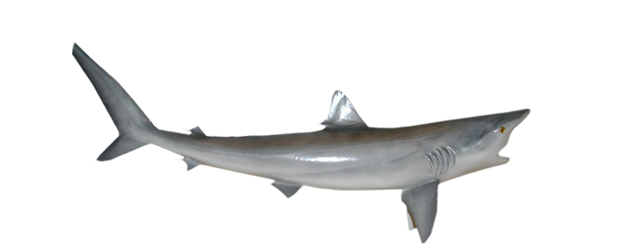Shark, Reef

View Regulations

Scientific Name
Carcharhinus perezii


Common Names
Caribbean reef shark


Description
The Reef Shark is similar shark to many darker colored sharks, with its coloration ranging from dark grey to dark brown with a whitish underside. They are distinguished from other sharks by broader upper teeth and a long tip on the second dorsal fin. They also have a first dorsal fin that trails back to the second dorsal fin in a raised ridge. In addition to this the underside of the fins is often darker in coloration.


Habitat & Behaviour
Reef Sharks gain their name from their favorite hunting area, the coral reef. As such they prefer the shallower waters of reefs, particularly near shelves or large drop offs. When not hunting they can be found prone on the ocean floor.


Natural Prey
As the Reef Shark is at the top of the food chain in the Reef ecosystem they feed on a variety of reef fish and other invertebrates such as cephalopods.


Handling Tips
It goes without saying that you should steer well clear of any sharks mouth. They also have rough skin which if whipped on you can leave a rash. Little ones wiggle a quite a bit, grab behind gills and hold tail. Larger sharks tail snare if you can and keep in water. When releasing sharks try to leave as little line as possible. Hooks rot out in a few weeks. Pro Angler supports shark conservation and recommends you catch and release. If brought into the boat, leave for 15-20 minutes before handling, shark will tire and be easier to handle as their body is very strong as well. Known to even play dead before snapping at you, so be careful!

- Lucky Tackle Box
- Billfish Bounty in the Heart of the Mayan World – Guatemala
- The Best Species of Shark to Catch
- How to Catch a Shark: what equipment do you need?
- The Best Winter Fishing Spots in Texas






